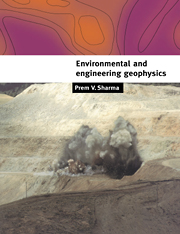Geophysics and the earth's environment
Geophysics is the study of the planet earth using methods of physics. However, the term is often used in a restricted sense to denote the physics applied to the study of the ‘solid earth’ (excluding the hydrosphere and atmosphere). Solid earth geophysics is traditionally divided into two main fields of study: (1) global geophysics, and (2) exploration geophysics. The first involves studies of large-scale problems relating to the earth's gross structure and dynamic behavior, whereas the second deals specifically with applications of geophysical techniques to problems of oil/gas, water, and mineral exploration.
Geophysical exploration has rapidly expanded over the past 50 years and has helped to cope with increasing needs for raw materials and energy resources required by modern civilization. However, in its wake this has created new geophysical tasks relating to environmental protection. The current environmental problems include, among others, location of buried hazardous waste material, protection of soil and groundwater from contamination, and planning of new, safe and secure disposal sites for dumping of nuclear, industrial, and domestic waste.
In addition, as mining, oil and gas production, nuclear power installations, earthworks and heavy constructions continue to expand, various engineering/geotechnical problems are also demanding increasing attention from geoscientists and engineers. Integrity and safety of critical man-made structures such as nuclear waste repositories, dams, subways, etc., are of great importance both from engineering and environmental considerations.
